
Valparaíso: The Jewel of the Pacific
Discover Valparaíso, Chile's vibrant coastal city known for its colorful houses, street art, historic funiculars, and rich cultural heritage. A UNESCO World Heritage gem.
Valparaíso, often called 'Valpo' by locals, is a vibrant coastal city in Chile known for its colorful houses, steep hills, and rich cultural heritage. This port city is a UNESCO World Heritage site and offers a unique blend of bohemian charm and historical significance. Visitors can stroll through its winding streets, taking in the eclectic mix of street art that adorns nearly every building and wall. The city's funiculars, or ascensores, provide a unique way to navigate its steep terrain and offer stunning panoramic views of the Pacific Ocean. Valparaíso's historic quarter is a maze of narrow alleyways and picturesque plazas, where you can find an array of cafes, art galleries, and boutique shops. The city's artistic spirit is palpable, with numerous murals and installations that reflect its dynamic and creative energy. Don't miss a visit to La Sebastiana, one of the homes of the famous Chilean poet Pablo Neruda, which has been converted into a museum showcasing his life and works. The port area, known as Muelle Prat, is bustling with activity and offers boat tours that give a different perspective of the city from the water. Seafood lovers will delight in the fresh catches available at local markets and restaurants, where you can savor traditional Chilean dishes. Valparaíso also boasts a lively nightlife, with bars and clubs that cater to a diverse crowd, ensuring that the city's energy continues well into the night.
Local tips in Valparaíso
- Wear comfortable shoes as the city's steep hills and cobblestone streets require plenty of walking.
- Take a ride on one of the historic funiculars for a unique way to see the city and get some great views.
- Visit La Sebastiana early in the day to avoid crowds and fully enjoy Pablo Neruda's former home.
- Explore the street art in Cerro Alegre and Cerro Concepción neighborhoods for the best murals and photographs.
- Try local seafood dishes at the Mercado Cardonal for an authentic taste of Valparaíso's culinary scene.
Neighbourhoods in Valparaíso
Valparaíso: The Jewel of the Pacific
Valparaíso, often called 'Valpo' by locals, is a vibrant coastal city in Chile known for its colorful houses, steep hills, and rich cultural heritage. This port city is a UNESCO World Heritage site and offers a unique blend of bohemian charm and historical significance. Visitors can stroll through its winding streets, taking in the eclectic mix of street art that adorns nearly every building and wall. The city's funiculars, or ascensores, provide a unique way to navigate its steep terrain and offer stunning panoramic views of the Pacific Ocean. Valparaíso's historic quarter is a maze of narrow alleyways and picturesque plazas, where you can find an array of cafes, art galleries, and boutique shops. The city's artistic spirit is palpable, with numerous murals and installations that reflect its dynamic and creative energy. Don't miss a visit to La Sebastiana, one of the homes of the famous Chilean poet Pablo Neruda, which has been converted into a museum showcasing his life and works. The port area, known as Muelle Prat, is bustling with activity and offers boat tours that give a different perspective of the city from the water. Seafood lovers will delight in the fresh catches available at local markets and restaurants, where you can savor traditional Chilean dishes. Valparaíso also boasts a lively nightlife, with bars and clubs that cater to a diverse crowd, ensuring that the city's energy continues well into the night.
When is the best time to go to Valparaíso?
Iconic landmarks you can’t miss
Playa Caleta Portales
Experience the vibrant atmosphere and breathtaking views at Playa Caleta Portales, a must-visit beach destination in Valparaíso, Chile.

Plaza Sotomayor
Explore the historical Plaza Sotomayor, a vibrant hub of culture, architecture, and maritime history in the heart of Valparaíso, Chile.

Muelle Prat
Discover the vibrant atmosphere of Muelle Prat in Valparaíso, where stunning harbor views, fresh seafood, and local culture come together.

Plaza De La Victoria
Discover the tranquil beauty and cultural heritage of Plaza De La Victoria, a serene park in the vibrant heart of Valparaíso, Chile.

La Sebastiana Museo de Pablo Neruda
Explore La Sebastiana, the captivating museum of Pablo Neruda, where art, poetry, and stunning views intertwine in vibrant Valparaíso.

Playa Las Torpederas
Discover the tranquil allure of Playa Las Torpederas in Valparaíso, a beautiful beach retreat blending relaxation with vibrant local culture.

Valparaiso Cultural Park
Explore the vibrant Valparaíso Cultural Park, a hub of art, history, and nature in the heart of Chile's iconic coastal city.

Ascensor Reina Victoria
Discover the breathtaking views of Valparaíso from the historic Ascensor Reina Victoria, a must-visit attraction blending culture and scenic beauty.

Baburizza Palace
Explore Baburizza Palace, a stunning art museum in Valparaíso, where Chilean culture and European artistry beautifully intertwine.

Paseo 21 de Mayo de Valparaíso
Experience the stunning vistas and vibrant culture at Paseo 21 de Mayo in Valparaíso, a must-visit for every traveler exploring the Chilean coast.

Museo de Historia Natural de Valparaíso
Explore the Museo de Historia Natural de Valparaíso, where Peru's rich biodiversity and geological history come alive through captivating exhibits and interactive displays.

Museo a Cielo Abierto
Experience the vibrant street art and cultural heritage of Valparaíso at Museo a Cielo Abierto, an open-air museum that captivates with every mural.

Cerro Alegre
Experience the vibrant colors and artistic charm of Cerro Alegre in Valparaíso, a scenic spot that captures the essence of Chile's coastal heritage.

Mirador Pablo Neruda
Experience the stunning panoramas and artistic charm at Mirador Pablo Neruda in Viña del Mar, a must-visit for every tourist exploring Chile.
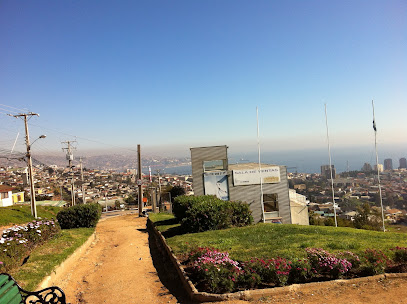
Ascensor Concepcion
Discover the historic Ascensor Concepcion in Valparaíso, Chile – a charming funicular offering stunning views and a taste of local culture.

Unmissable attractions to see
Flower clock
Discover the vibrant beauty of the Flower Clock in Viña del Mar, a stunning symbol of nature and artistry that captivates every visitor.
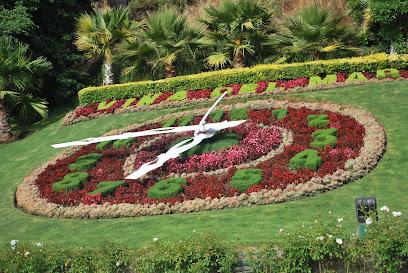
Vergara Pier
Experience the breathtaking coastal views and vibrant culture at Vergara Pier, a premier tourist attraction in Viña del Mar, Valparaíso.
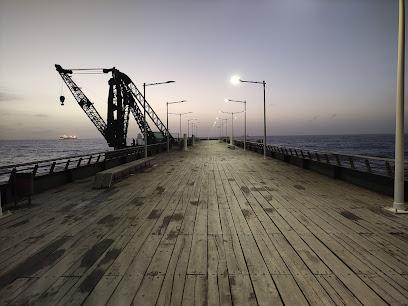
Playa Caleta Portales
Experience the beauty and culture of Playa Caleta Portales, a vibrant beach destination in Valparaíso, Chile, perfect for relaxation and local cuisine.

Quinta Vergara
Discover Quinta Vergara in Viña del Mar: a lush park blending beauty, culture, and relaxation, perfect for tourists seeking a peaceful getaway.

Viña del Mar National Botanical Garden
Explore the enchanting Viña del Mar National Botanical Garden, a lush paradise filled with diverse plant life and serene landscapes in Valparaíso, Chile.

Plaza Sotomayor
Explore the vibrant Plaza Sotomayor, a historical landmark in Valparaíso, Chile, rich in culture, architecture, and maritime history.

Casino de Viña del Mar
Discover the excitement of Casino de Viña del Mar, where gaming, dining, and entertainment come together in a stunning coastal setting.

Muelle Prat
Experience the heart of Valparaíso at Muelle Prat, a vibrant waterfront hub filled with stunning views, rich history, and delicious local cuisine.

Casa de Isla Negra
Discover the magic of Casa de Isla Negra, Pablo Neruda's coastal retreat, where poetry meets the ocean in a stunning museum experience.

Plaza De La Victoria
Explore Plaza De La Victoria, a vibrant park in Valparaíso, Chile, where art, culture, and community come together in a stunning urban setting.
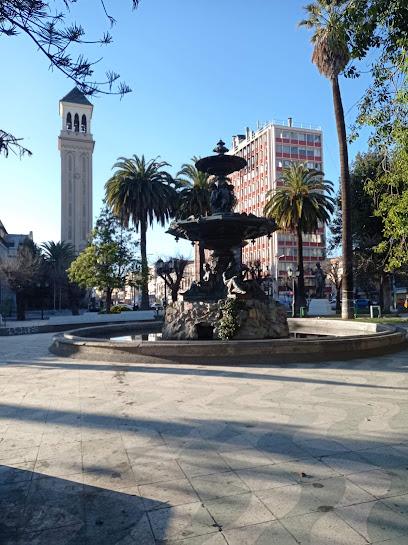
San Alfonso del Mar
Experience luxury and tranquility at San Alfonso del Mar, home to the world's largest swimming pool in the picturesque Algarrobo, Chile.

La Sebastiana Museo de Pablo Neruda
Discover the poetic charm of La Sebastiana, Pablo Neruda's home, a cultural gem in Valparaíso's vibrant landscape.

Concon Dunes
Explore the stunning Concon Dunes in Valparaíso, where adventure and breathtaking coastal beauty come together for an unforgettable experience.

Reñaca beach
Discover the vibrant Reñaca Beach in Valparaíso, Chile, where golden sands, azure waters, and lively culture await every visitor.

Playa Las Torpederas
Experience the tranquil beauty and vibrant marine life at Playa Las Torpederas in Valparaíso, a perfect escape for beach lovers.

Essential places to dine
La Joya Sanguches
Experience the best hamburgers in Valparaíso at La Joya Sanguches – where local flavors meet vibrant dining.
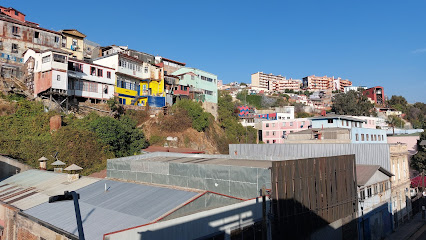
Portofino Restaurant
Experience exquisite coastal dining at Portofino Restaurant in Valparaíso—where fresh flavors meet stunning ocean views.
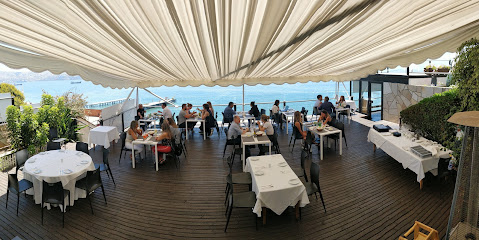
Marco Polo
Savor the flavors of Chile at Marco Polo in Valparaíso – where culinary tradition meets contemporary dining.

J Cruz M
Discover authentic Chilean cuisine at J Cruz M in Valparaíso – where every dish tells a story of tradition and flavor.
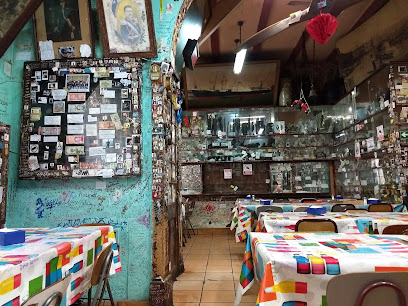
Caleta Portales Restaurant
Discover exquisite seafood and authentic Chilean cuisine at Caleta Portales Restaurant in Valparaíso's breathtaking coastal setting.

Nazca Restaurante Peruano
Discover authentic Peruvian cuisine at Nazca Restaurante Peruano in Valparaíso—where every dish tells a story of rich culture and flavor.

Restaurant O'Higgins
Experience authentic Chilean cuisine at Restaurant O'Higgins in Valparaíso—where tradition meets modernity in every bite.

Restaurant La Concepción
Experience the rich flavors of Valparaíso at Restaurant La Concepción, where culinary artistry meets breathtaking views.

Restaurant Paola
Discover authentic Chilean cuisine at Restaurant Paola in Valparaíso - where every dish tells a story.

DEL BARRIO
Experience culinary excellence at Del Barrio in Valparaíso – where traditional flavors meet modern creativity in a vibrant atmosphere.

Cafe Turri
Experience fine dining at Café Turri with breathtaking views of Valparaíso's stunning harbor and exceptional Chilean cuisine.

Moneda de Oro
Discover authentic Chilean cuisine at Moneda de Oro in Valparaíso, where every dish tells a story and every visit feels like home.

Restaurant El Pimentón
Experience authentic Chilean cuisine at Restaurant El Pimentón in Valparaíso - where tradition meets flavor in every dish.

Bogarín
Discover Bogarín in Valparaíso - A top-rated restaurant offering authentic Chilean flavors in a vibrant setting.

J. Cruz
Experience authentic Chilean flavors at J. Cruz in Valparaíso - a must-visit restaurant for food enthusiasts seeking vibrant local cuisine.

Markets, malls and hidden boutiques
Mall Marina
Discover the vibrant shopping experience at Mall Marina in Viña del Mar, where local culture meets a modern retail paradise.

Mall Paseo Ross
Explore Mall Paseo Ross in Valparaíso, a vibrant shopping center with diverse stores, delicious eateries, and exciting entertainment for every traveler.

Mercado El Cardonal
Discover the heart of Valparaíso at Mercado El Cardonal, a vibrant market filled with fresh produce, local crafts, and authentic street food delights.
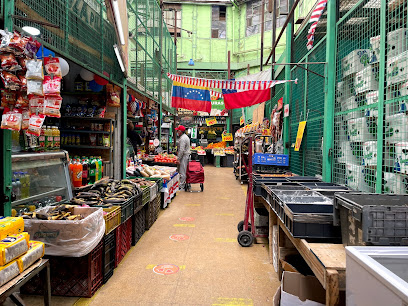
Falabella Valparaíso
Explore Falabella Valparaíso for a unique shopping experience that blends fashion, home goods, and the vibrant culture of this coastal gem.

Paris
Explore the vibrant home goods store Paris in Valparaíso, where quality meets Chilean culture in a delightful shopping experience.

Sodimac Constructor Valparaíso
Discover a vast selection of building materials and expert advice at Sodimac Constructor Valparaíso, a cornerstone for DIY projects in the heart of Chile.

Mall Paseo del Puerto
Discover a vibrant shopping experience at Mall Paseo del Puerto in Valparaíso, offering diverse retail, dining, and entertainment options.

Nostalgic
Explore Nostalgic in Valparaíso for a unique clothing experience combining local culture and contemporary fashion.

Taufig Hales y cia ltda .Textil Madaba(Yarur)
Explore an extensive collection of vibrant fabrics and textiles at Taufig Hales y Cia Ltda in Valparaíso, a must-visit for craft enthusiasts.

Tienda Panini Valparaiso
Explore Tienda Panini Valparaiso, a unique hobby store filled with toys, collectibles, and games that bring joy to every visitor.

Blanca Nieves
Explore the vibrant fashion scene at Blanca Nieves, a unique clothing store in Valparaíso offering eclectic styles and local craftsmanship.

Lanas Leria
Explore Lanas Leria, Valparaíso's premier yarn store, where creativity meets quality in the heart of Chile's artistic city.

Moss Valparaíso
Explore the vibrant world of gaming at Moss Valparaíso, where locals gather for chess, trading cards, and unforgettable experiences in the heart of Chile.

Citrola
Discover the eclectic fashion and unique local artistry at Citrola, Valparaíso's must-visit clothing store for trendy travelers.

Farretex
Discover unique fashion at Farretex, a chic clothing store in Valparaíso, reflecting the artistic spirit of this vibrant coastal city.

Essential bars & hidden hideouts
Bar Cinzano
Experience the vibrant nightlife and rich cultural heritage at Bar Cinzano in Valparaíso, where every sip tells a story.

Máscara Pub
Experience the vibrant nightlife of Valparaíso at Máscara Pub, where craft drinks and lively entertainment come together.

tio bar
Experience the vibrant nightlife at Tio Bar in Valparaíso, where delicious cocktails meet a lively atmosphere and local culture.

UK Bar - Cervezas Premium, Coctelería, Pizzería y Burger en Valparaíso
Discover the lively atmosphere and delectable offerings at UK Bar, where premium drinks and gourmet cuisine meet in the heart of Valparaíso.

Bar el Irlandés
Discover Bar el Irlandés - A vibrant Irish pub in Valparaíso, where authentic flavors, live music, and a welcoming atmosphere await you.

Hotzenplotz
Experience a delightful fusion of German flavors and local cuisine at Hotzenplotz, a must-visit tapas bar in the heart of Valparaíso.

Matiz
Experience the vibrant nightlife at Matiz, a must-visit bar in Valparaíso offering lively music, eclectic drinks, and a friendly atmosphere.

Bar Liberty
Experience the lively atmosphere and eclectic drinks at Bar Liberty, the ultimate bar in Valparaíso for tourists and locals alike.

Bar Industrial
Experience the vibrant nightlife and unique cocktails at Bar Industrial, Valparaíso's must-visit bar for an unforgettable evening.

Chillout bar/café
Experience the vibrant nightlife of Valparaíso at Chillout Bar, where relaxation meets local flavor in a cozy atmosphere.
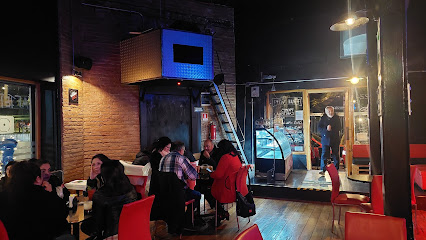
Bar Keops
Discover the vibrant nightlife of Valparaíso at Bar Keops, where local flavors and a lively atmosphere await every visitor.

Bar Macaluca
Experience the vibrant nightlife of Valparaíso at Bar Macaluca, where delightful drinks and local culture converge in an inviting atmosphere.

Bar De Pisco
Experience the essence of Chilean culture at Bar De Pisco, where the vibrant spirit of Pisco meets the charm of Valparaíso’s nightlife.

Restaurants Terraza y Bars
Discover the vibrant flavors of Valparaíso at Restaurants Terraza y Bars, where exquisite dining meets a lively cocktail experience.

Patio Valparaiso
Discover the vibrant flavors and unique atmosphere of Patio Valparaiso, a top gastropub destination in the heart of Valparaíso, Chile.

Local Phrases
-
- HelloHola
[oh-la] - GoodbyeAdiós
[ah-dee-ohs] - YesSí
[see] - NoNo
[no] - Please/You're welcomePor favor/De nada
[por fah-vor/deh nah-dah] - Thank youGracias
[grah-see-ahs] - Excuse me/SorryPerdón
[pehr-dohn] - How are you?¿Cómo estás?
[koh-moh ehs-tahs] - Fine. And you?Bien. ¿Y tú?
[byen. ee too] - Do you speak English?¿Hablas inglés?
[ah-blahs een-glays] - I don't understandNo entiendo
[noh ehn-tee-ehn-doh]
- HelloHola
-
- I'd like to see the menu, pleaseQuisiera ver el menú, por favor
[kee-see-eh-rah behr ehl meh-noo, por fah-vor] - I don't eat meatNo como carne
[noh koh-moh kahr-neh] - Cheers!¡Salud!
[sah-loo] - I would like to pay, pleaseQuisiera pagar, por favor
[kee-see-eh-rah pah-gahr, por fah-vor]
- I'd like to see the menu, pleaseQuisiera ver el menú, por favor
-
- Help!¡Ayuda!
[ah-yoo-dah] - Go away!¡Vete!
[veh-teh] - Call the Police!¡Llama a la policía!
[yah-mah ah lah poh-lee-see-ah] - Call a doctor!¡Llama a un doctor!
[yah-mah ah oon dohk-tohr] - I'm lostEstoy perdido
[ehs-toy pehr-dee-doh] - I'm illEstoy enfermo
[ehs-toy ehn-fehr-moh]
- Help!¡Ayuda!
-
- I'd like to buy...Quisiera comprar...
[kee-see-eh-rah kohm-prahr] - I'm just lookingSolo estoy mirando
[soh-loh ehs-toy mee-rahn-doh] - How much is it?¿Cuánto cuesta?
[kwan-toh kwehs-tah] - That's too expensiveEsto es demasiado caro
[ehs-toh ehs deh-mah-syah-doh kah-roh] - Can you lower the price?¿Puedes rebajar el precio?
[pweh-dehs reh-bah-hahr ehl preh-syoh]
- I'd like to buy...Quisiera comprar...
-
- What time is it?¿Qué hora es?
[keh oh-rah ehs] - It's one o'clockEs la una
[ehs lah oo-nah] - Half past (10)Media (diez)
[meh-dee-ah (d-yehs)] - MorningMañana
[mah-nyah-nah] - AfternoonTarde
[tahr-deh] - EveningNoche
[noh-cheh] - YesterdayAyer
[ah-yehr] - TodayHoy
[oy] - TomorrowMañana
[mah-nyah-nah] - 1Uno
[oo-noh] - 2Dos
[dohs] - 3Tres
[trehs] - 4Cuatro
[kwah-troh] - 5Cinco
[seen-koh] - 6Seis
[sehs] - 7Siete
[syeh-teh] - 8Ocho
[oh-choh] - 9Nueve
[nweh-veh] - 10Diez
[d-yehs]
- What time is it?¿Qué hora es?
-
- Where's a/the...?¿Dónde está...?
[dohn-deh ehs-tah] - What's the address?¿Cuál es la dirección?
[kwal ehs lah dee-rehk-syon] - Can you show me (on the map)?¿Puedes mostrarme (en el mapa)?
[pweh-dehs mohs-trar-meh (ehn ehl mah-pah)] - When's the next (bus)?¿Cuándo es el próximo (bus)?
[kwan-doh ehs ehl proh-ksih-moh (boos)] - A ticket (to ....)Un boleto (a ....)
[oon boh-leh-toh (ah)]
- Where's a/the...?¿Dónde está...?
History of Valparaíso
-
Valparaíso was officially founded on September 13, 1536, by the Spanish conquistador Juan de Saavedra. He named the area after his home village in Spain. The city quickly became a vital port for Spanish ships traveling between the Americas and Europe.
-
During the 16th and 17th centuries, Valparaíso was frequently targeted by pirates and privateers. Notable attacks include the raid by Francis Drake in 1578 and the assault by Dutch pirate Joris van Spilbergen in 1615. These events prompted the construction of fortifications to protect the city.
-
The city experienced significant growth in the 19th century, particularly after Chile gained independence from Spain in 1818. Valparaíso became one of the most important ports on the Pacific coast, serving as a key stopover for ships traveling between the Atlantic and Pacific Oceans via the Straits of Magellan.
-
Valparaíso developed a rich cultural tapestry due to the influx of immigrants from Europe, particularly Britain, Germany, and Italy, during the 19th century. These communities brought with them their architecture, customs, and traditions, which have left a lasting imprint on the city’s character.
-
The late 19th and early 20th centuries are often referred to as Valparaíso's Golden Age. However, the opening of the Panama Canal in 1914 significantly reduced maritime traffic to the port, leading to an economic decline that lasted for much of the 20th century.
-
On August 16, 1906, Valparaíso was struck by a devastating earthquake that caused widespread destruction and claimed thousands of lives. The city was rebuilt in the following years, and this event is a key chapter in its history, reflecting the resilience of its inhabitants.
-
In 2003, Valparaíso's historic quarter was declared a UNESCO World Heritage Site. The area is renowned for its unique urban fabric, including colorful hillside houses, cobblestone streets, and vintage funiculars. This recognition has helped revive interest in preserving the city's cultural heritage.
-
Today, Valparaíso is known for its vibrant arts scene, including street art and music festivals. The city continues to attract tourists from around the world who come to experience its bohemian atmosphere, historical significance, and stunning coastal views.
Valparaíso Essentials
-
Valparaíso is located on the central coast of Chile, approximately 120 kilometers northwest of Santiago. The nearest international airport is Comodoro Arturo Merino Benítez International Airport (SCL) in Santiago. From Santiago, you can take a bus from Terminal Alameda or Terminal Pajaritos, which travel frequently to Valparaíso and the journey takes about 1.5 to 2 hours. Alternatively, you can rent a car or arrange for a private transfer.
-
Valparaíso is well-connected by public transportation. The city has an extensive bus network and a metro system (Merval) that connects Valparaíso with nearby cities like Viña del Mar. Taxis and 'colectivos' (shared taxis) are also widely available. For a unique experience, don't miss riding the historic funiculars, which provide easy access to the city's steep hills. Walking is another great way to explore the city's colorful streets and murals.
-
The official currency in Chile is the Chilean Peso (CLP). Credit and debit cards are widely accepted in hotels, restaurants, and shops in Valparaíso. ATMs are readily available throughout the city. It is advisable to carry some cash, especially if you plan to visit smaller establishments or markets. Currency exchange services are available in Santiago and Valparaíso, but using ATMs to withdraw local currency is often the most convenient option.
-
While Valparaíso is generally safe for tourists, it is important to stay vigilant. Areas around the port and certain neighborhoods like Cerro Cordillera and Cerro Carcel are known for higher crime rates, particularly targeting tourists. It is advisable to avoid walking alone at night in these areas. Keep an eye on your belongings in crowded places and use taxis or registered transportation services after dark.
-
In case of emergency, dial 133 for police assistance, 131 for an ambulance, and 132 for the fire department. Valparaíso has several hospitals and clinics, including Hospital Carlos Van Buren. It is highly recommended to have travel insurance that covers medical emergencies. Pharmacies are available throughout the city for minor health concerns.
-
Fashion: Do dress comfortably and casually, but avoid overly revealing clothing. Layers are recommended due to the variable coastal weather. Religion: Do respect local customs, especially when visiting churches. Modest attire is advised. Public Transport: Do be courteous and offer seats to elderly passengers on buses and the metro. Don't eat or drink on public transport. Greetings: Do greet people with a handshake or a 'Hola' (hello). A kiss on the right cheek is common among friends. Eating & Drinking: Do try local seafood and traditional dishes like 'chorrillana' and 'empanadas'. Don't refuse an offer of food or drink, as it may be considered impolite.
-
To experience Valparaíso like a local, explore the city's vibrant street art and murals, especially in neighborhoods like Cerro Alegre and Cerro Concepción. Visit the local markets, such as Mercado Cardonal, for fresh produce and seafood. Engage with locals in cafes and bars to learn about the city's rich history and culture. Don't miss a visit to La Sebastiana, the house of poet Pablo Neruda, which offers stunning views of the city and bay.
Trending Landmark in Valparaíso
-
Playa Caleta Portales
-
Plaza Sotomayor
-
Muelle Prat
-
Plaza De La Victoria
-
La Sebastiana Museo de Pablo Neruda
-
Playa Las Torpederas
-
Valparaiso Cultural Park
-
Ascensor Reina Victoria
-
Baburizza Palace
-
Paseo 21 de Mayo de Valparaíso
-
Museo de Historia Natural de Valparaíso
-
Museo a Cielo Abierto
-
Cerro Alegre
-
Mirador Pablo Neruda
-
Ascensor Concepcion
Nearby Cities to Valparaíso
-
Things To Do in Viña del Mar
-
Things To Do in Santiago
-
Things To Do in Rancagua
-
Things To Do in Curicó
-
Things To Do in Mendoza
-
Things To Do in San Juan
-
Things To Do in Coquimbo
-
Things To Do in San Rafael
-
Things To Do in La Serena
-
Things To Do in Concepción
-
Things To Do in Temuco
-
Things To Do in Pucon
-
Things To Do in Córdoba
-
Things To Do in Valdivia
-
Things To Do in Osorno

















